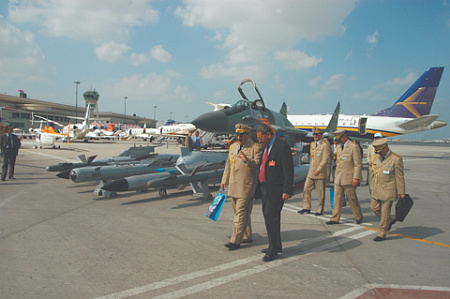A new report of the Stockholm Institute on arms exports has been releasedExperts from the Stockholm International Peace Research Institute (SIPRI) have prepared an annual report on trends in international arms supplies.
Over the five-year period (from 2018 to 2022), arms imports to Europe increased by 47% compared to the previous five-year period. At the same time, at the global level, arms supplies decreased by 5.1%. Shipments to Africa decreased by 40%, to America – by 21%, to Asia and Oceania - 7.5%, to the Middle East – by 8.8%.
The largest importers in the last five years have been India, Saudi Arabia, Qatar, Australia and China. The five largest exporters included the USA, Russia, France, China and Germany.
According to SIPRI experts, the armed conflict in Europe has not significantly changed the global picture, despite the fact that 2022 has become one of the reporting years. However, it is noted that this year Ukraine has become the third largest importer of weapons in the world. There is also a significant increase in the number of orders for arms imports in Europe, which will clearly be reflected in future reports. The authors of the report believe that what is happening in Ukraine and around it in the international arena will have serious consequences for the arms trade in the near future.
The Institute's experts identified 63 states as arms exporters in 2018-2022. The five largest arms exporters (USA, Russia, France, China and Germany) accounted for about 76% of all arms exports. At the same time, over a five-year period, arms exports from the United States and France increased by 14% and 44%, respectively. While Russia, China and Germany lost significant export volumes: 31%, 23% and 35%, respectively.
SIPRI experts named 167 countries as arms importers for the period 2018-2022. Among which the largest buyers were India, Saudi Arabia, Qatar, Australia and China: they accounted for 36% of world imports. Arms imports by region give the following picture: Asia and Oceania – 41% of the total world imports, the Middle East – 31%, Europe – 16%, America (North and South) – 5.8%, Africa - 5%.
The picture of imports has transformed over the past five years, taking into account changes in the international arena and the emergence of new hotbeds of tension. For example, in Asia and Oceania, import figures increased significantly due to Japan (+171% compared to the previous five-year period) and South Korea (+61%). Experts believe that this was due to the growing tension in the Asia-Pacific region, the key factors of which were the aggravation of relations between China and Taiwan, as well as the intensified missile launches of North Korea.
In Europe, such a key factor was the conflict between Russia and Ukraine, which led to a 47% increase in imports relative to the previous period. The authors of the report expect that arms imports to Europe will continue to grow in the future.
Based on the available information about orders and order negotiations, the authors of the report make assumptions about which states will become the largest exporters in the coming years. They believe that the United States will retain its leadership and will almost certainly remain the largest exporter of major weapons.
At the same time, it is assumed that Russia is likely to give up its second place to other exporters, since the number of supplies under consideration and supply negotiations is decreasing and, according to the institute's experts, will continue to decline in the future. They believe that the conflict between Russia and Ukraine forces the Russian defense industry to reorient from exports to the production of weapons for its own needs.
In addition, the situation for Russia is aggravated by sanctions and restrictions, which will continue to be a serious obstacle to the growth of arms exports. China is also expecting a continuation of the decline. And according to the authors, France and South Korea will be able to improve their positions.
At the same time, experts note that today it is very difficult to make accurate forecasts regarding the further development of trends in the arms market. However, they agree that the circumstances prevailing in the international arena will significantly change the structure of the market and the positions of its key players in the future.
It should be noted that Russian officials are skeptical about such ratings. So, commenting on the rating of the Stockholm Institute by the end of 2020, the head of the Federal Service for Military-Technical Cooperation (FSMTC) Dmitry Shugaev noted that the conclusions of the analytical center do not reflect the whole picture, since "SIPRI uses only open data, which, of course, are not complete." And at the same time they have an undoubted political background.
The position of Rostec Corporation remains unchanged, whose experts believe that SIPRI ratings are not a guideline for the Russian defense industry. First of all, because, according to the methodology adopted in the Western think tank, all calculations are given in US dollars. However, the main volume of domestic defense industry products is the state defense order, where all calculations are made only in rubles. H
Vasily Ivanov

